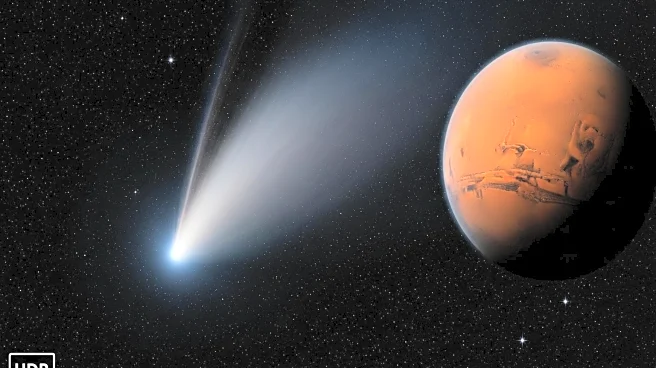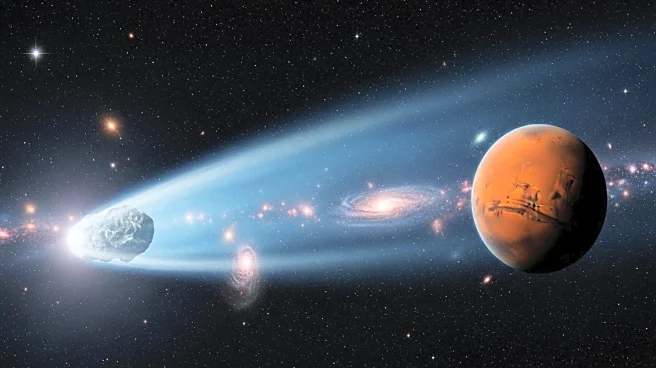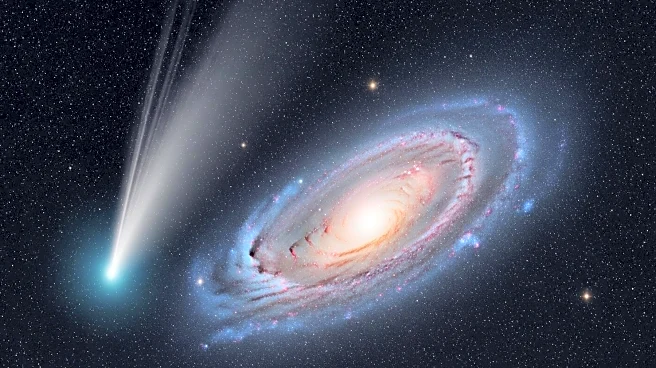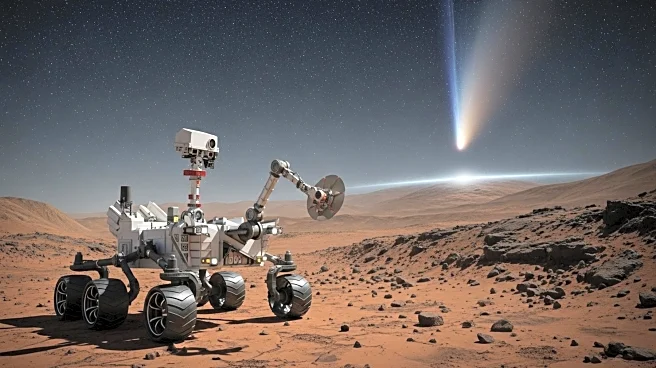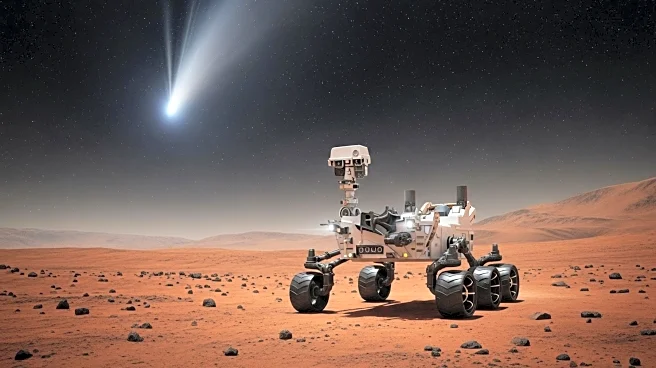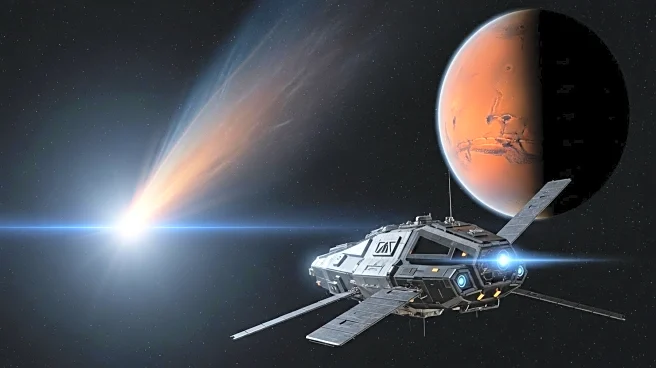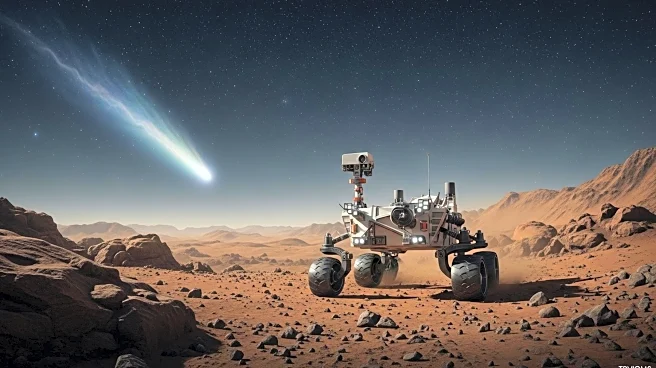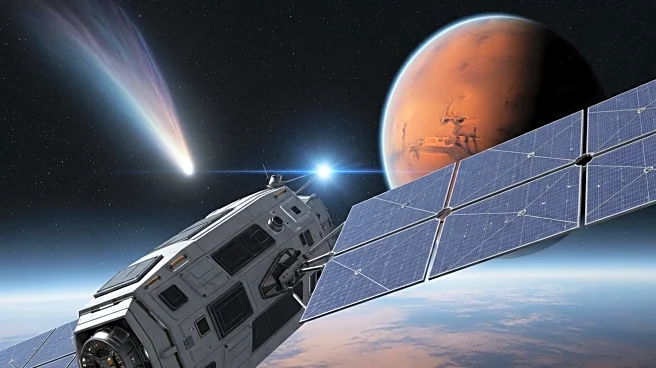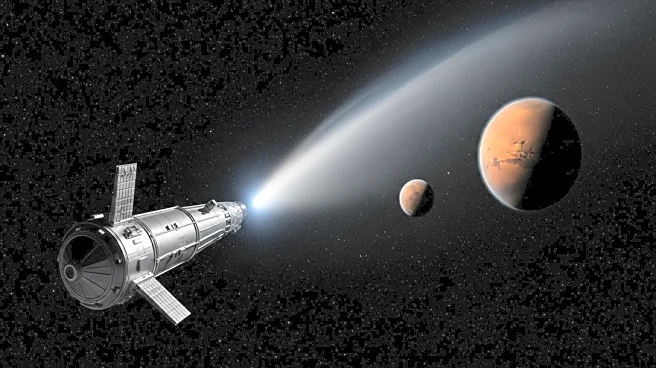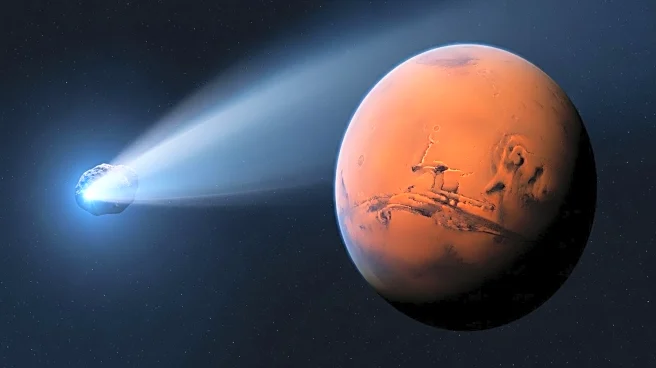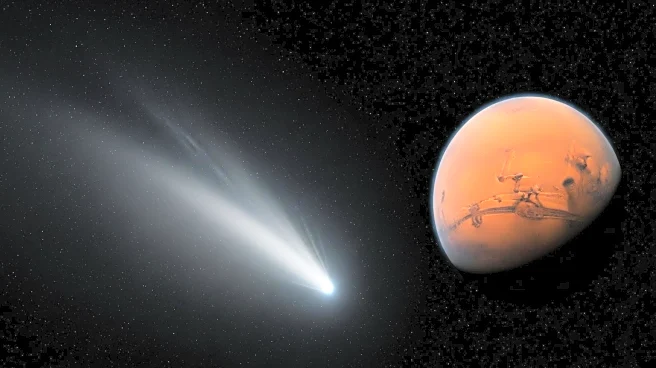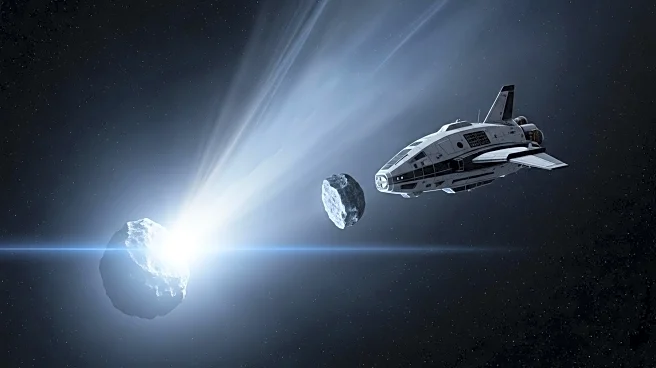What is the story about?
What's Happening?
The European Space Agency's ExoMars Trace Gas Orbiter has captured new images of the interstellar comet 3I/ATLAS as it passed close to Mars. This comet is the third such object confirmed to have entered our solar system, following 'Oumuamua in 2017 and comet 2I/Borisov in 2019. The comet, first detected in July, has attracted significant interest from astronomers and space enthusiasts. The orbiter's instruments, designed to photograph Mars' surface, faced challenges in capturing the faint comet, which is significantly fainter than usual targets. The comet's closest approach to the sun is expected around October 30, and it poses no threat to Earth.
Why It's Important?
The passage of interstellar comet 3I/ATLAS offers a rare chance to study an object from beyond our solar system. These comets provide valuable information about the formation of other star systems and the materials present in them. Understanding the physical properties and behavior of such comets can enhance our knowledge of the universe and inform future space exploration efforts. The comet's journey through the solar system is closely monitored by various space agencies, highlighting the importance of international collaboration in space research.
What's Next?
As 3I/ATLAS continues its path through the solar system, astronomers are eager to study its characteristics further. The comet is expected to become visible again after passing the sun, allowing for additional observations. NASA and other agencies plan to use various telescopes and observatories to monitor the comet, including the James Webb Space Telescope and the Transiting Exoplanet Survey Satellite. These efforts aim to gather more data on the comet's composition and trajectory.
Beyond the Headlines
The study of interstellar comets like 3I/ATLAS can deepen our understanding of the universe's origins and the potential for life beyond Earth. These objects are considered 'outsiders,' carrying information about the formation of worlds far from our solar system. The ongoing analysis of such comets may lead to discoveries about the building blocks of planets and the conditions necessary for life.
AI Generated Content
Do you find this article useful?
